Artwork by Magda Cabrero
Monday, April 21, we will meet in person.
Go to calendar for our schedule
Address for OHMC meditation space:
3812 Northampton St. NW, Washington DC 20015
Please arrive a few minutes early so we can invite the bell on time. You may also arrive 15 minutes early to practice working meditation by helping us set up cushions.
Dear friends,
This week, we will meet Monday evening, April 21, from 7-8:30PM EDT in person at our meditation space (3812 Northampton Street NW); Wednesday morning, April 23, from 7-8AM EDT online; and Friday, April 25, from 12-1PM EDT in person/online (hybrid).
Dear friends,
On Monday, our meditation evening will be facilitated by Magda. Magda shares:
During these times, I have met many people deeply impacted by the actions of the new administration. Many of us have internalized not only our personal suffering but also the suffering around us. Some have come to feel profoundly alone in their pain, believing it to be permanent. For a time, I, too, felt unable to detach from suffering as if I was becoming one with it.
I was grateful to attend a class at the European Institute of Applied Buddhism (EIAB) called No Mud, No Lotus, where Brother Phap An taught us about manas, the aspect of consciousness tied to the ego. Manas tells us to cling to experiences, convincing us that we are somehow at the center of events, that whatever happens is happening to us. It focuses our attention on impermanent things, making us wish they would last forever or worrying they will never go away.
During this time, I also read The Diamond That Cuts Through Illusion, Thich Nhat Hanh’s translation and analysis of the Diamond Sutra. This text teaches that one of our greatest illusions is the belief in a separate self and the idea that we are our suffering. Reading the Diamond Sutra has helped me take a step closer to cutting through this illusion.
Cutting Through the Illusion of the Self
The full title of the Diamond Sutra is Vajracchedikā Prajñāpāramitā. Vajracchedikā means "cutting through afflictions, ignorance, and illusion," while Prajñāpāramitā translates to "perfection of wisdom" or "the understanding that carries us across suffering to liberation." In his commentary, Thay urges us to study and practice the sutra as a path to wisdom and to a deeper perception of reality.
Habitually we believe that this suffering is me. However, the self is composed of external elements —-sun, clouds, water, space—and is constantly changing. Our fundamental misapprehension of the world and ourselves—of the six “sense objects” in Buddhist thought—gives rise to the illusions of the fixed self, permanence, and separation. Recognizing this frees us from attachment and suffering.
Manas reinforces the illusion that suffering belongs to us, but suffering arises from a variety of external conditions and is impermanent. As Brother Phap An explained at the EIAB, the Buddha taught that when certain conditions arise, we perceive something as "being." When conditions change, we call it "non-being," but this is a mistaken perception. Our false sense of I and mine creates attachment—to suffering as well as to relationships and identities.
At the heart of the Diamond Sutra, the Buddha teaches that for one who aspires to be a bodhisattva, the essential practice is detaching from the idea that "a self, a person, a being, or a life span" truly exists (The Diamond That Cuts Through Illusion, p. 8).
Recognizing & Letting Go of Attachments
Expanding beyond the illusion of self allows us to see the interdependent nature of reality. As Brother Phap An shared, “Understanding suffering as impermanent and interdependent frees us from manas.” We often find ourselves trapped in mental loops that reinforce the illusion of permanent suffering, but recognizing the deeper reality of interbeing helps us release our attachment to it.
I have experienced this firsthand. After the recent election, I found myself identifying deeply with the suffering of marginalized children and youth. It was an echo of the despair I witnessed eight years ago when President Trump was elected—like an old wound reopening. For weeks, I felt unable to detach from this suffering.
Through meditation and mindful collaboration with others, such as the members of my sangha’s engaged mindfulness group, I learned to transform this energy into compassionate action rather than clinging to it. Now, I begin each day with gratitude, reminding myself that this suffering is not me. I strive to let go of ego, experiencing the profound emptiness of the self.
Thay explains that this emptiness is not nihilism but freedom from the illusion of a fixed identity. To be empty is to be free—free from false notions of self, from attachment, from suffering. It is an embrace of impermanence: no birth, no death. To stay true to my path, I must move beyond my attachment to suffering and cultivate a broader, more liberating perspective.
Dissolving the Illusion: Finding Freedom in Interbeing
I am learning to let the diamond cut through the illusion that suffering defines me. More clearly than ever, I see how suffering is bound to the deep-seated belief in a separate self, ingrained since childhood. However, nothing exists in isolation—there is no separate self, only interbeing.
Through meditation, suffering transforms into compassion, both for ourselves and others. When my suffering felt unbearable, simply sharing it lightened the burden, helping me see that we ultimately belong to each other.
At my next sangha facilitation, I will explore what happens after we cut through this illusion—how we may find something akin to the ever-reflecting, cosmic, Indra’s net.

